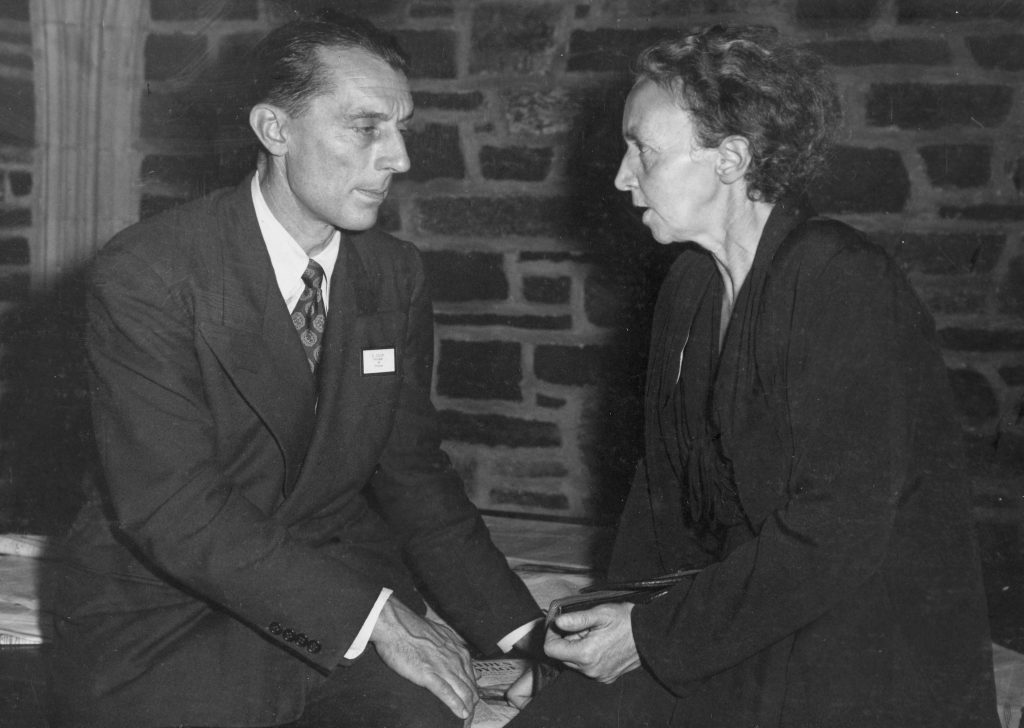Frédéric Joliot-Curie (1900-1958) was a French physicist and Nobel laureate.
In 1937 he was appointed professor at the College de France in Paris. He led a team studying nuclear physics and nuclear chemistry and commissioned the first cyclotron in Western Europe. Joliot-Curie’s team studied nuclear chain reactions, as well as the requirements of building and sustaining a nuclear reactor. Joliot-Curie was one of the leading scientists in the field of nuclear chain reactions that Albert Einstein mentioned in his 1939 letter to President Roosevelt.
In 1940, just before the occupation of Paris, Joliot-Curie managed to smuggle out all of his scientific work and research materials with two members of his team: Lew Kowarski and Hans Halban. For the remainder of the war, Joliot-Curie served as a member of the French Resistance, and was key in coordinating the production of the Molotov cocktails that Resistance members used to destroy German tanks.
Early Life
Frédéric Joliot was born in 1900. After completing school in 1925, he moved to the Radium Institute to work as the assistant to Marie Curie. In 1926, he married her daughter, Irene Curie, and the couple changed their surnames to ‘Joliot-Curie.’ He obtained his Doctor of Science degree a few years after the marriage, on the encouragement of Marie Curie, and began studying the structure of the atom with his wife, specifically the projection of nuclei. The Joliot-Curies were awarded the 1935 Nobel Prize in Chemistry for their discovery of artifical radioactivity.
Later Years
After WWII ended, Joliot-Curie became the director of the Centre National de la Recherche Scientifique and then was appointed by President Charles DeGaulle as France’s High Commissioner for Atomic Energy. In 1948, he was put in charge of the creation of France’s first atomic pile. He was relieved of his duties after a couple of years due to his communist leanings, but was later elected President of the World Peace Council. Following the death of his wife in 1956, he assumed her position as the Chair of Nuclear Physics at the Sorbonne for the remaining years of his life. Frédéric Joliot-Curie died in Paris in 1958.
Read AHF Research Assistant Simon Mairson’s article on Joliot-Curie’s life and politics here.





